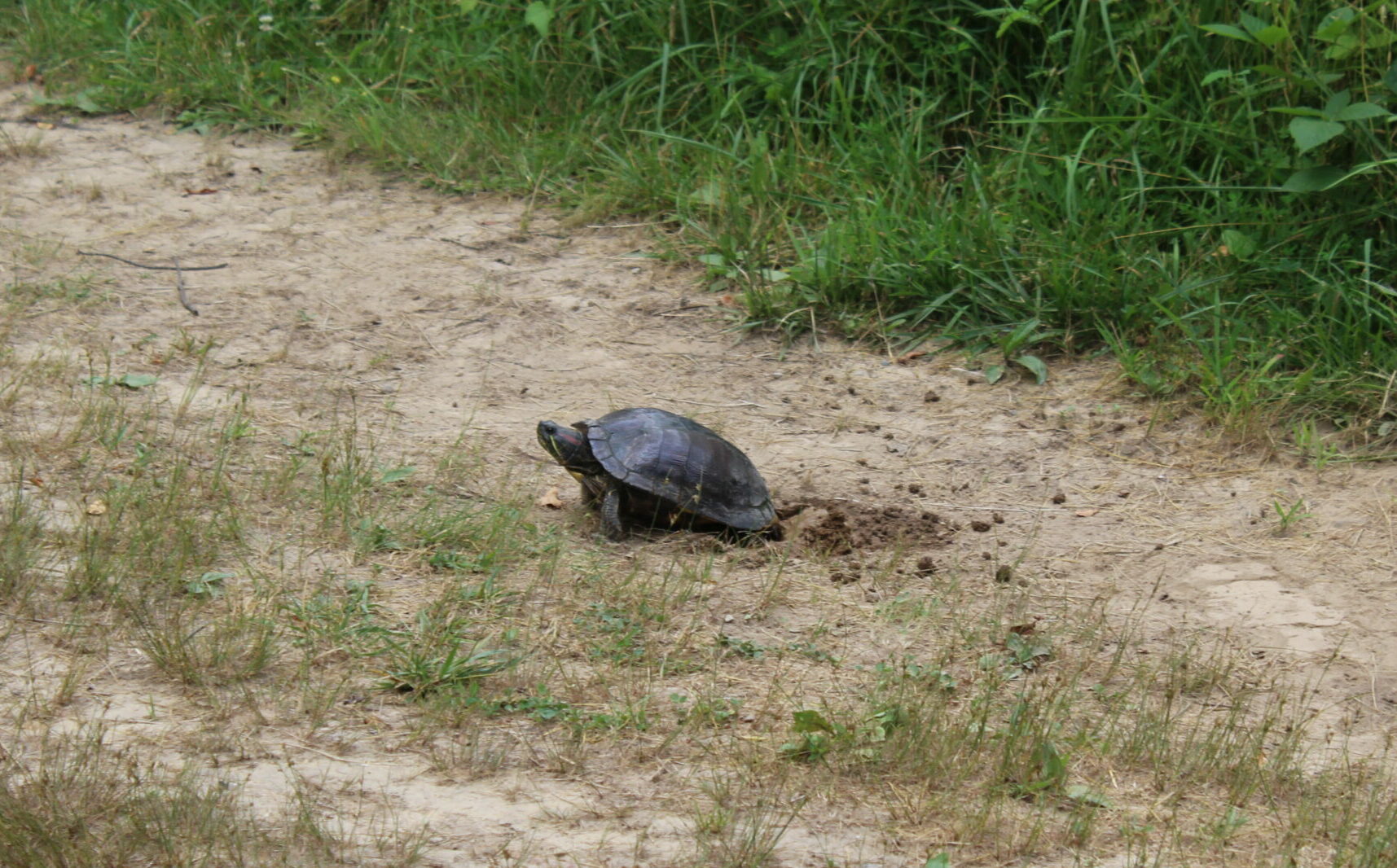by Jacob Crider
As summer weather beats down on the Bluegrass State, our turtle species nesting season, which begins here in late spring. We have had quite a few nest sites built in the recent warm weeks, mostly by our resident population of Red-eared Sliders (Trachemys scripta).
Red-eared sliders lay about 5-30 eggs in sandy and loose soils and prefer spots that are exposed to the sun. Sunnier spots will keep the soil warm and help to incubate the eggs properly. The holes are usually only a few inches deep and are covered up with dirt after laying in an effort to protect the eggs from and predators. Click the following to watch a video of one digging a hole: Incubation temperature has an effect on whether the hatchlings will become male of females, with cooler incubation temperatures becoming males, and females hatching in warmer conditions.
Click the following link to watch a video of one laying an egg: 20240617_123748000_iOS
Red-eared sliders are one of 5 species of turtles found in CMNP and are the most common. These semi-aquatic turtles are generalists, residing in almost any body of water ranging from farm ponds to large rivers. Like many turtle species, they are resilient to mucky and polluted areas and can adapt to urban waterways. They feed on invertebrates, small fish, amphibians, crustaceans, and aquatic plants.
They are best identified by their red “ear” found on their head, a large oval shaped red spot appearing behind their eye. The bottom of their shell, known as the plastron, is yellow with two rows of dark spots running down the sides. They can be confused with our other common aquatic turtle, the Painted turtle (Chrysemys picta), but Painted turtles do not have red “ears” and have a crimson red plastron. Red- eared Sliders will usually have a greener and boxier shell than Painted turtles.
Next time you come and visit Creasey Mahan, our woodland garden and frog pond have the best chances of seeing turtles and like Red-eared Sliders! if you see a turtle creating a nest and laying eggs, be sure to give them space and to not disturb them during the egg laying process.



